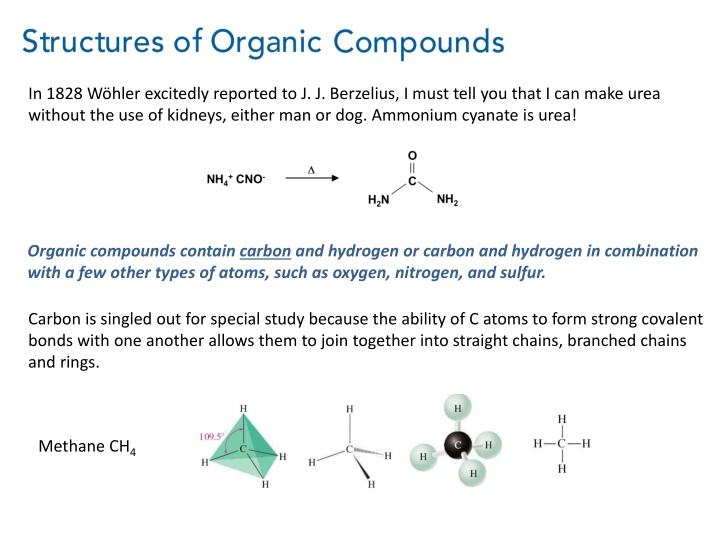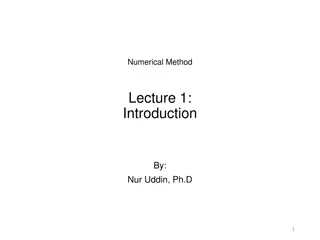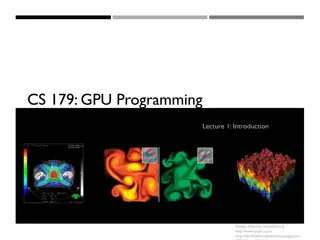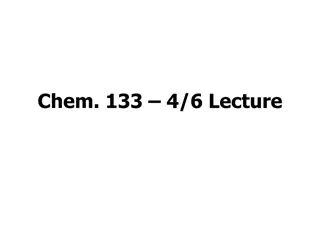
Organic Chemistry Fundamentals and Reactions Overview
Delve into the foundational concepts of organic chemistry, including the synthesis of urea, hydrocarbons, functional groups, stereochemistry, aromatic compounds, and control of reactions. Explore the significance of carbon atoms in organic compounds, the diversity of structural isomers, and the distinction between kinetic and thermodynamic control in reactions. Enhance your understanding of organic chemistry principles with visual aids and explanations in this comprehensive overview.
Download Presentation

Please find below an Image/Link to download the presentation.
The content on the website is provided AS IS for your information and personal use only. It may not be sold, licensed, or shared on other websites without obtaining consent from the author. If you encounter any issues during the download, it is possible that the publisher has removed the file from their server.
You are allowed to download the files provided on this website for personal or commercial use, subject to the condition that they are used lawfully. All files are the property of their respective owners.
The content on the website is provided AS IS for your information and personal use only. It may not be sold, licensed, or shared on other websites without obtaining consent from the author.
E N D
Presentation Transcript
In 1828 Whler excitedly reported to J. J. Berzelius, I must tell you that I can make urea without the use of kidneys, either man or dog. Ammonium cyanate is urea! Organic compounds contain carbon and hydrogen or carbon and hydrogen in combination with a few other types of atoms, such as oxygen, nitrogen, and sulfur. Carbon is singled out for special study because the ability of C atoms to form strong covalent bonds with one another allows them to join together into straight chains, branched chains and rings. Methane CH4
Hydrocarbons Propane C3H8 Constitutional isomers Cyclohexane Functional Groups: Organic compounds typically contain elements in addition to carbon and hydrogen. These groupings of one or several atoms called functional groups
Stereoisomers Enantiomers (chiral molecules) Diastereomers
Aromatic hydrocarbons have ring structures with conjugated bonding system (a bonding scheme among the ring atoms that consists of alternating single and double bonds).
Kinetic and thermodynamic control of the reactions Thermodynamic control: the most stable product (C ) is obtained. Kinetic control: yields the product that comes up lower barriers (C). Should we provide a lot of energy thermodynamic control is reached; otherwise we will have kinetic control. Example:














